You don’t have to wait to graduate to make an impact. Discover what's wildly possible with undergraduate research!

You don’t have to wait to graduate to make an impact. Discover what's wildly possible with undergraduate research!
Lucy Bowers, Human Health Sciences, May 2020 graduate and current UK Orthopedic Trauma Research Fellow - listed as First Author in publication
Bowers LC, Gribble PA, Hoch MC, Villasante Tezanos AG, Kosik KB. Physical therapy referral and medication for ankle sprain visits to physician offices: an analysis of the national ambulatory medical care survey. Phys Sportsmed. 2020;1-6. doi:10.1080/00913847.2020.1800369
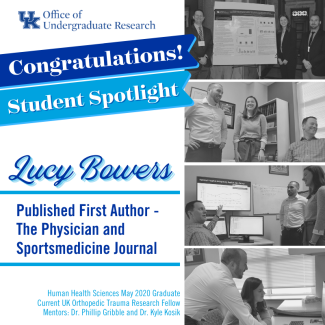
Abstract
Objectives: Supervised physical therapy is the recommended care for an ankle sprain. Yet, recent evidence indicates some ankle sprain patients may not receive the recommended care, and instead, prescribed medication to alleviate symptoms. Therefore, the purpose of this study is to describe the percentage of patients reporting to an office-based physician in the U.S. that were or were not referred to physical therapy. Secondly, to describe the percentage of ankle sprain patients with or without medication administered, supplied or ordered.
Methods: This was a secondary analysis of the cross-sectional National Ambulatory Medical Care Survey (NAMCS) from 2007 to 2016. The NAMCS is a multi-stage probability sample survey of visits to office-based physicians. The percentage and associated 95% confidence intervals (CI) were calculated for visits that had a physical therapy referral or a non-steroidal anti-inflammatory drug (NSAID), opioid and non-opioid analgesics administered, supplied or ordered. Sampled data were weighted to produce national-level estimates.
Results: A physical therapy referral was given for 16.8% (95% CI: 13.2, 21.2) of ankle sprain visits. Approximately 34.5% (95%CI: 30.5, 38.7) of all ankle sprain visits had a medication administered, supplied or ordered. NSAIDs (72.1%; 95% CI: 66.9,76.8) and opioids (21.0%; 95% CI: 16.3, 26.5) were the two most common types of medication.
Conclusions: NSAIDs and opioid medication combined were administered, supplied or ordered more frequently than a referral to physical therapy. These findings provide evidence that suggests many ankle sprain patients reporting to an office-based physician are not receiving the recommended care; physical therapy. Rather, medication appears to be the primary type of care provided to patients. These data are important because it gives a focused area to improve the treatment of an ankle sprain by developing strategies that ensure all patients are provided the recommended care from the onset of entering the healthcare system.
Kaitlyn Brock, Neuroscience and Psychology, May 2025 graduate - listed as First Author in publication
Kaitlyn E Brock, Robin L Cooper
The Effects of Doxapram Blocking the Response of Gram-Negative Bacterial Toxin (LPS) at Glutamatergic Synapses
Biology (Basel) 2023 Jul 25;12(8):1046. DOI: 10.3390/biology12081046
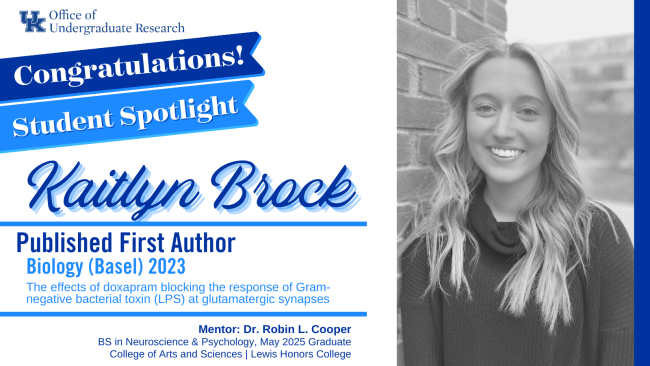
Abstract
Lipopolysaccharides (LPS) associated with Gram-negative bacteria are one factor responsible for triggering the mammalian immune response. Blocking the action of LPS is key to reducing its downstream effects. However, the direct action of LPS on cells is not yet fully addressed. LPS can have rapid, direct effects on cells in the absence of a systemic immune response. Recent studies have shown that doxapram, a blocker of a subset of K2P channels, also blocks the acute actions of LPS. Doxapram was evaluated to determine if such action also occurs at glutamatergic synapses in which it is known that LPS can increase synaptic transmission. Doxapram at 5 mM first enhanced synaptic transmission, then reduced synaptic response, while 10 mM rapidly blocked transmission. Doxapram at 5 mM blocked the excitatory response induced by LPS. Enhancing synaptic transmission with LPS and then applying LPS combined with doxapram also resulted in retarding the response of LPS. It is possible doxapram and LPS are mediated via a similar receptor or cellular responses. The potential of designing pharmacological compounds with a similar structure to doxapram and determining the binding of such compounds can aid in addressing the acute, direct actions by LPS on cells.
Tony Butera, Materials Engineering, May 2024 Graduate - listed as Co-First Author in publication
Laura J. Waldman a 1, Tony Butera a 1, James D. Boyd b, Martha E. Grady a
Sucrose-mediated formation and adhesion strength of Streptococcus mutans biofilms on titanium
https://doi.org/10.1016/j.bioflm.2023.100143

Abstract
Biofilms consist of bacterial cells surrounded by a matrix of extracellular polymeric substance (EPS), which protects the colony from many countermeasures, including antibiotic treatments. Growth and formation of bacterial biofilms are affected by nutrients available in the environment. In the oral cavity, the presence of sucrose affects the growth of Streptococcus mutans that produce acids that erode enamel and form dental caries. Biofilm formation on dental implants commonly leads to severe infections and can restrict osseointegration necessary for the implant to be successful. This work determines the effect of sucrose concentration on biofilm EPS formation and adhesion of Streptococcus mutans, a common oral colonizer, to titanium substrates simulating common dental implants. Biofilm formation and profiles are visualized at high magnification with scanning electron microscopy (SEM). Large mounds and complex structures consisting of bacterial cells and EPS can be seen in biofilms at sucrose concentrations that are favorable for biofilm growth. The laser spallation technique is used to apply stress wave loading to the biofilm, causing the biofilm to delaminate at a critical tensile stress threshold. The critical tensile stress threshold is the adhesion strength. Because laser spallation applies the stress loading to the rear of the substrate, bulk adhesion properties of the biofilm can be determined despite the heterogenous composition and low cohesion strength of the biofilm. Statistical analysis reveals that adhesion strength of biofilms initially increase with increasing sucrose concentration and then decrease as sucrose concentration continues to increase. The adhesion strength of bacterial biofilms to the substrate in this study is compared to the adhesion of osteoblast-like cells to the same substrates published previously. When sucrose is present in the biofilm growth environment, S. mutans adhesion is higher than that of the osteoblast-like cells. Results of this study suggest sucrose-mediated S. mutans biofilms may outcompete osteoblasts in terms of adhesion during osseointegration, which could explain higher rates of peri-implant disease associated with high sugar diets. Further studies demonstrating adhesion differentials between biofilms and cells including co-cultures are needed and motivated by the present work.
Elizabeth Elliott, Biology, May 2025 graduate - listed as First Author in publication
Elizabeth Elliott, Robin L Cooper
Fluoxetine antagonizes the acute response of LPS: Blocks K2P channels
Comp Biochem Physiol C Toxicol Pharmacol. 2024 Sep 20:287:110045. doi: 10.1016/j.cbpc.2024.110045
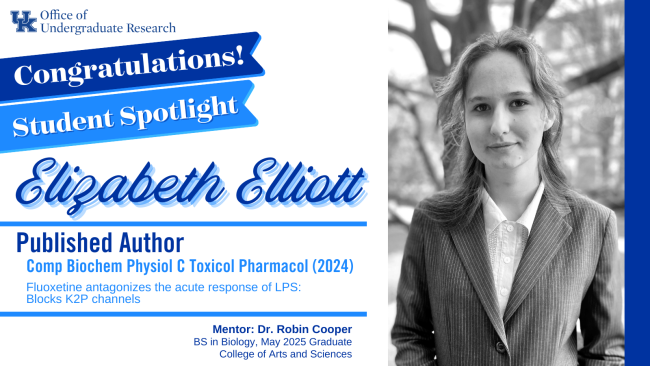
Abstract:
The channels responsible for maintaining resting membrane potential are known as K2P (two-P-domain K+ subunit) channels, a subset of which are known to be blocked by Fluoxetine. In this experiment, the compound's effects on the membrane potential were examined on muscles in larval Drosophila overexpressing a subtype of K2P channel (known in Drosophila as dORKA1 or ORKA1) and compared to larvae without overexpression. The compound was also observed in sequence and/or combination with a form of lipopolysaccharide (LPS) that transiently activates K2P channels. Different concentrations of Fluoxetine were tested, and it was also examined in cocktail with the LPS. At 25 μM Fluoxetine exposure, muscle in control larvae underwent depolarization, while muscles overexpressing K2P channels hyperpolarized; at 50 μM, however, much more variable responses were observed. The LPS caused hyperpolarization in both larval strains, but the effect was more transient in the Canton-S line than in the K2P overexpressors. Finally, LPS continued to cause hyperpolarization even in the presence of Fluoxetine, while Fluoxetine quickly depolarized the muscle during exposure to LPS. The cocktail showed a smaller effect on muscles overexpressing ORKA1 as compared to the controls, indicating that Fluoxetine does not block the ORKA1 subtype. This study is significant because it demonstrates how overexpression of K2P channels alters membrane response to LPS and Fluoxetine exposure.
Lauren Hudson, Neuroscience and Biology, Sophomore - listed as First Author in publication.
Hudson, L., Samons, K. M., Dicken, H. E., Prichard, C., Weiss, L. T., Edward, J., Vanderpool, R. C., & Vanderford, N. L. (2020). A Brief Educational Intervention Enhances Basic Cancer Literacy Among Kentucky Middle and High School Students. Journal of cancer education : the official journal of the American Association for Cancer Education, 10.1007/s13187-020-01696-3. Advance online publication. https://doi.org/10.1007/s13187-020-01696-3
Kentucky experiences the highest overall cancer incidence and mortality rates in the USA with the greatest burden in the eastern, Appalachian region of the state. Cancer disparities in Kentucky are driven in part by poor health behaviors, poverty, lack of health care access, low education levels, and low health literacy. Individuals with inadequate health literacy are less likely to participate in preventive measures such as obtaining screenings and making healthy lifestyle choices, thus increasing their chances of developing and dying from cancer. By increasing cancer literacy among youth and adults, it may be possible to decrease cancer disparities across Kentucky. This study aimed to establish connections with middle and high schools in Kentucky that would facilitate pilot implementation of a brief cancer education intervention and assessment of cancer health literacy among these student populations. A baseline pretest cancer literacy survey consisting of 10 items was given to 349 participants, followed by the delivery of a cancer education presentation. Immediately following the presentation, participants were given a posttest with identical items to the pretest. Participants were primarily Caucasian (89.4%), female (68.7%), and in 10th through 12th grade (80.5%). Significant (p < 0.0001) increases in both average and median percent of correctly marked items were observed between the pretest and posttest (average, pretest = 56% versus posttest = 85%; median, pretest = 60% versus posttest = 90%). The scores for all individual items increased after the brief intervention. The results demonstrated a significant increase in cancer literacy levels immediately after the pilot educational intervention. We suggest that it may be possible to improve cancer literacy rates in Kentucky by integrating cancer education into middle and high school science and/or health education curricula. This could ultimately drive changes in behaviors that may help lower cancer incidence and mortality rates. Plans for future interventional studies measuring long-term cancer knowledge retention and resultant behavioral changes among middle and high school students as well as the feasibility of integrating cancer education into middle and high school curricula are also discussed.
Lauren Hudson, Neuroscience and Biology, Junior - listed as First Author in 2nd publication.
Hudson, L., Prichard, C., Weiss, L. T., & Vanderford, N. L. (2020). Evidence for Cancer Literacy Knowledge Retention among Kentucky Middle and High School Students after a Brief Educational Intervention. Southern Medical Journal, 113(11), 541–548. https://doi.org/10.14423/smj.0000000000001171
Objectives: Although cancer is seen in every state in the United States, it does not affect every geographic area and population equally. Kentucky has the highest cancer incidence and mortality rates in the country, with an unusually high number of cases localized in its Appalachian region. Risk factors such as sun exposure, tobacco use, poor diet/exercise, poverty, and lack of access to healthcare centers contribute to this disparity. Because education levels in the area are low, cancer literacy (defined as how well a person can understand the advice of a healthcare professional and make appropriate lifestyle decisions) also is low. In this study, we examined the short-term and long-term effects of a brief cancer-related intervention on the cancer literacy of Kentucky middle and high school students.
Methods: This study targeted middle and high school students in Kentucky. We administered an online 10-item cancer literacy pretest, followed by a brief educational intervention and a posttest to 164 students at six Kentucky middle and high schools. This posttest also included questions asking how likely students would be to change their habits or to encourage others to change their habits as a result of the intervention. All of the participating students also were sent a 3-month follow-up online survey with items identical to the pretest; 48 students completed the 3-month follow-up test, leading to a response rate of 29.2%. The data were summarized as frequencies, averages, median, and confidence intervals (CIs) of correctly marked answers. A paired t test was used to test for significance.
Results: We observed an increase in the overall average test score from 50.2% (95% CI 47.8%–52.6%) on the pretest to 77.1% (95% CI 74.6%–79.7%) on the posttest immediately following the intervention. There also was an increase in the average number of correct responses on each item. The 3-month follow-up test similarly showed average test score improvement (75.4%). When asked how likely students would be to change their habits as a result of the intervention on a scale from 1 to 10 (1 = extremely unlikely, 10 = extremely likely), the median was 6. When asked how likely students would be to encourage another to change their habits, the median was an 8.
Conclusions: These results provide evidence that a brief educational intervention can increase cancer literacy, improve cancer knowledge retention, and encourage behavior change in Appalachian Kentucky students. Increasing cancer literacy may result in increased participation in preventive cancer screenings and improved health habits, which could ultimately lower cancer rates in the region.
View Lauren's 2020 Virtual Showcase presentation
Katie Land, Biology, Senior - listed as First Author in publication.
Katie L Land, Madison E Lane, Ava C Fugate, Patrick R Hannon, Ovulation is Inhibited by an Environmentally Relevant Phthalate Mixture in Mouse Antral Follicles in Vitro, Toxicological Sciences, , kfaa170, https://doi.org/10.1093/toxsci/kfaa170
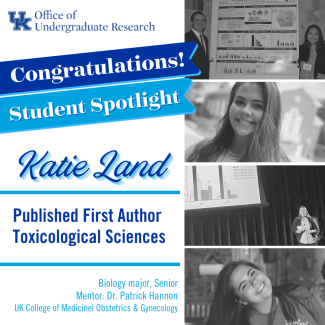
Abstract
Phthalates are solvents and plasticizers found in consumer products including cosmetics, food/beverage containers, housing materials, etc. Phthalates are known endocrine-disrupting chemicals that can directly target the ovary, potentially causing defects in ovulation and fertility. Women are exposed to multiple different phthalates daily, therefore this study investigated the effects of an environmentally relevant phthalate mixture (PHTmix) on ovulation. Ovulation is initiated by the luteinizing hormone (LH) surge, which induces prostaglandin (PG) production, progesterone (P4)/progesterone receptor (PGR) signaling, and extra-cellular matrix (ECM) remodeling. We hypothesized that the PHTmix would directly inhibit ovulation by altering the levels of PGs, P4/PGR, and enzymes involved in ECM remodeling. Antral follicles from CD-1 mice were treated with vehicle control alone (dimethylsulfoxide, DMSO), hCG alone (LH analog), and hCG+PHTmix (1-500μg/ml), and samples were collected across the ovulatory period. The PHTmix decreased ovulation rates at all doses tested in a dose dependent manner when compared to hCG. PG levels were decreased by the PHTmix when compared to hCG, which was potentially mediated by altered levels of PG synthesis (Ptgs2) and transport (Slco2a1) genes. The PHTmix altered P4 and Pgr levels when compared to hCG, leading to decreases in downstream PGR-mediated genes (Edn2, Il6, Adamts1). ECM remodeling was potentially dysregulated by altered levels of ovulatory mediators belonging to the matrix metalloproteases and plasminogen activator families. These data suggest that phthalate exposure inhibits ovulation by altering PG levels, P4/PGR action, and ECM remodeling.
Sarisha Lohano, Biology, May 2025 graduate - listed as Co-Author in publication
Garrett Elmore, Brooke M. Ahern, Nicholas M. McVay, Kyle W. Barker, Sarisha Lohano, Nemat Ali, Andrea Sebastian, Douglas A. Andres, Jonathan Satin, Bryana M. Levitan
The C-terminus of Rad is required for membrane localization and L-type calcium channel regulation
J Gen Physiol (2024) 156 (9): e202313518. DOI: 10.1085/jgp.202313518
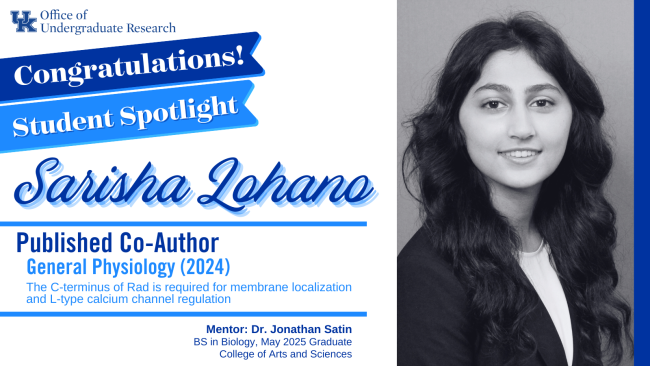
Abstract: L-type CaV1.2 current (ICa,L) links electrical excitation to contraction in cardiac myocytes. ICa,L is tightly regulated to control cardiac output. Rad is a Ras-related, monomeric protein that binds to L-type calcium channel β subunits (CaVβ) to promote inhibition of ICa,L. In addition to CaVβ interaction conferred by the Rad core motif, the highly conserved Rad C-terminus can direct membrane association in vitro and inhibition of ICa,L in immortalized cell lines. In this work, we test the hypothesis that in cardiomyocytes the polybasic C-terminus of Rad confers t-tubular localization, and that membrane targeting is required for Rad-dependent ICa,L regulation. We introduced a 3xFlag epitope to the N-terminus of the endogenous mouse Rrad gene to facilitate analysis of subcellular localization. Full-length 3xFlag-Rad (Flag-Rad) mice were compared with a second transgenic mouse model, in which the extended polybasic C-termini of 3xFlag-Rad was truncated at alanine 277 (Flag-RadΔCT). Ventricular cardiomyocytes were isolated for anti-Flag-Rad immunocytochemistry and ex vivo electrophysiology. Full-length Flag-Rad showed a repeating t-tubular pattern whereas Flag-RadΔCT failed to display membrane association. ICa,L in Flag-RadΔCT cardiomyocytes showed a hyperpolarized activation midpoint and an increase in maximal conductance. Additionally, current decay was faster in Flag-RadΔCT cells. Myocardial ICa,L in a Rad C-terminal deletion model phenocopies ICa,L modulated in response to β-AR stimulation. Mechanistically, the polybasic Rad C-terminus confers CaV1.2 regulation via membrane association. Interfering with Rad membrane association constitutes a specific target for boosting heart function as a treatment for heart failure with reduced ejection fraction.
Nicole Marguerite - Neuroscience & Chemical Engineering major, Junior - Listed as First Author in Publication
Marguerite NT, Bernard J, Harrison DA, Harris D, Cooper RL. Effect of Temperature on Heart Rate for Lucilia sericata (syn Phaenicia sericata) and Drosophila melanogaster with Altered Expression of the TrpA1 Receptors. Insects. 2021; 12(1):38. https://doi.org/10.3390/insects12010038
Marguerite, N.T., McCubbin, S., and Cooper, R.L. (2021) Mechanosensitive receptors in regulating heart rate in larval Drosophila. (In press, Journal of Pharmacology and Toxicology).
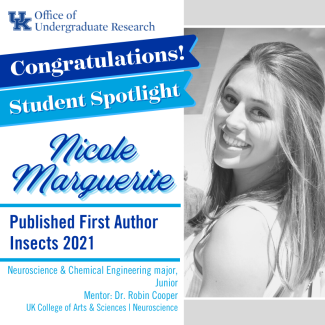
Simple Summary
Thermal receptors detect temperature changes and can alter the activity of the cells. A subtype referred to as TrpA1 responds to increased temperature and increases expression in the heart of mammals when the heart is injured or is reduced in oxygen. It is not known if this is beneficial or detrimental to the heart. Thus, we examined the effect on heart activity of altering heart expression of TrpA1 in larval fruit flies at varied temperatures. Hearts of normal larvae stopped beating at 37 °C but hearts expressing high levels of TrpA1 stopped beating at 30 °C. In contrast, unmodified larvae of a blowfly species that grows at higher temperatures showed increased heart rate with increased temperature to 37 °C. It is not known if blowflies alter their expression of the thermal receptors. Thermal receptors can also be activated by physical stretch. Thus, it is possible an increase in expression in mammalian hearts within a narrow temperature range could be helpful in maintaining heart rate, as activation of TrpA1 receptors may be modulated by the stretching and relaxing of the heart itself. More research is needed in examining the function of TrpA1 receptors in mammalian hearts.
Abstract
The transient receptor potential (TrpA—ankyrin) receptor has been linked to pathological conditions in cardiac function in mammals. To better understand the function of the TrpA1 in regulation of the heart, a Drosophila melanogaster model was used to express TrpA1 in heart and body wall muscles. Heartbeat of in intact larvae as well as hearts in situ, devoid of hormonal and neural input, indicate that strong over-expression of TrpA1 in larvae at 30 or 37 °C stopped the heart from beating, but in a diastolic state. Cardiac function recovered upon cooling after short exposure to high temperature. Parental control larvae (UAS-TrpA1) increased heart rate transiently at 30 and 37 °C but slowed at 37 °C within 3 min for in-situ preparations, while in-vivo larvae maintained a constant heart rate. The in-situ preparations maintained an elevated rate at 30 °C. The heartbeat in the TrpA1-expressing strains could not be revived at 37 °C with serotonin. Thus, TrpA1 activation may have allowed enough Ca2+ influx to activate K(Ca) channels into a form of diastolic stasis. TrpA1 activation in body wall muscle confirmed a depolarization of membrane. In contrast, blowfly Lucilia sericata (syn Phaenicia sericata) larvae increased heartbeat at 30 and 37 °C, demonstrating greater cardiac thermotolerance. View Full-Text
Keywords: TRPA; Drosophila; heart; temperature
Shelby McCubbin - Junior, Neuroscience major - listed as First Author in publication
McCubbin, S., Abou El-Ezz, M., Brown, C., Calderaro, T., Evans, C., Grant, T., Hazelett, R., High, C., Buendia Castillo, D., Ilagan, T., Klier, J., Marguerite, N., Marino, F., Meredith, N., Naidugari, J., Nethery, B., Russell, W., Sommers, N., and Cooper, R.L. (2021). The effects of Levetiracetam on glutamatergic synaptic transmission. Impulse, 1-8. http://web.as.uky.edu/Biology/faculty/cooper/labWWW-PDFs/McCubbin%20et%20al%20(2021).pdf
Marguerite, N.T., McCubbin, S., and Cooper, R.L. (2021) Mechanosensitive receptors in regulating heart rate in larval Drosophila. (In press, Journal of Pharmacology and Toxicology).
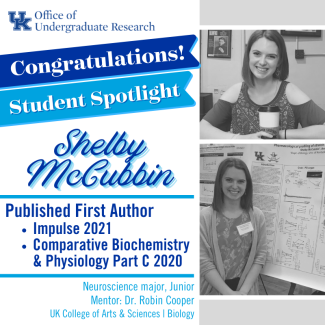
ABSTRACT
Epilepsy is a neurological disorder characterized by recurring, unpredictable seizures. Its disease burden is high, ranking fourth in the world’s neurological disorders behind tension-type headaches, migraines, and Alzheimer’s disease. The commonly used antiepileptic drug levetiracetam (Keppra) reduces epileptic seizures; however, the exact mechanism is not known. Some studies suggest that sodium and/or potassium ionic channels are directly altered, reducing membrane excitability. Yet others suggest it interacts with synaptic vesicle protein SV2 to alter synaptotagmin's (a calcium sensor vesicle protein) action in the presynaptic nerve terminal to reduce excitability. The aim in this study was to examine whether synaptic transmission would be reduced in a model glutamatergic synaptic preparation. In this study, the glutamatergic synapses at crayfish neuromuscular junctions (NMJs) were used to assess the drug's action. The evoked excitatory junction potentials of the crayfish NMJ were unexpectedly enhanced within 20 min of stimulation with pulse trains following static incubation of 10 min exposure to 1 mM doses. Repetitive stimulation for 2 min and incubation for 10 min without stimulation did not show an effect. This project was an authentic course-based undergraduate research experience (ACURE) in a neurophysiology teaching laboratory with 16 students. It appears levetiracetam acts differently in different animal models and varied experimental conditions are required to note the effects.
Abbreviations: ACURE – authentic course-based undergraduate research experience; EJP – excitatory junction potential; NMJ – neuromuscular junctions; STF – Short-term facilitation
Keywords: invertebrate; crustacean; neuromuscular, glutamate
Shelby McCubbin - Sophomore, Neuroscience major - listed as First Author in publication
McCubbin, S., Jeoung, A., Waterbury, C., and Cooper, R.L. (2020). Pharmacological profiling of stretch activated channels in proprioceptive neuron. Comparative Biochemistry and Physiology Part C 233. https://doi.org/10.1016/j.cbpc.2020.108765

Abstract
Proprioception in mammals and invertebrates occurs through stretch activated ion channels (SACs) localized in sensory endings. In mammals, the primary organs for proprioception are the intrafusal muscle spindles embedded within extrafusal muscle. In invertebrates there are varied types of sensory organs, from chordotonal organs spanning joints to muscle receptor organs (MRO) which are analogous to the mammalian muscle spindles that monitor stretch of muscle fibers. A subset of SACs are the PIEZO channels. They are comprised of a distinct type of protein sequence and are similar among species, from mammals to invertebrates. We screened several new agents (YODA 1, JEDI 2, OB 1 and DOOKU) which have been identified to act on SACs of the PIEZO 1 subtype. JEDI 2 increased activity in the crayfish MRO but not the crab chordotonal organs. The SACs of the crustacean proprioceptors have not been satisfactorily pharmacologically classified, nor has their molecular makeup been identified. We screened these pharmacological agents on model sensory organs in crustaceans to learn more about their subtype classification and compare genomic profiles of related species.
Keywords: Crustacean, Proprioception, SAC, Sensory, Stretch activated ion channels
Samuel Potter, Biology, Junior – listed as First Author in publication.
Potter, S., Krall, R.M., Mayo, S. Johnson, D., Zeidler-Watters, K., and Cooper, R.L. (2015). Population dynamics based on resource availability and founding effects: live and computational models. (In Press, The American Biology Teacher).
Martha Tillson, Justin C. Strickland & Michele Staton (2017) Age of First Arrest, Sex, and Drug Use as Correlates of Adult Risk Behaviors Among Rural Women in Jails, Women & Criminal Justice, 27:5, 287-301, DOI: 10.1080/08974454.2017.1291392
Abstract
Incarcerated women frequently report initiation of substance use and sexual encounters at an early age, and often engage in high-risk drug use and sexual behaviors as adults. This study examined the timing of first sex, drug use, and arrest, as well as their unique influences on specific risky behaviors in adulthood, among a high-risk population of rural women recruited from jails. Ages of initiation were all positively and significantly correlated, and each independently increased the likelihood of several risky behaviors in adulthood. Implications are discussed for screening, intervention, and treatment targeting high-risk women and girls in rural areas, particularly within criminal justice settings.
Keywords: risk behaviors, rural, incarcerated, women, initiation
Presented research at the National Institute of Diabetes and Digestive and Kidney Diseases KUH R25 Summer Undergraduate Research Virtual Symposium | August 4-5, 2021
Project Title: Computational Drug Repurposing for Polycystic Kidney Disease (Hannah L. Cleary, Kasi C. McPherson, PhD, Brittany N. Lasseigne, PhD)
"Annually, the University of Alabama-Birmingham School of Medicine Kidney Undergraduate Research Experience (KURE) hosts an NIH-funded summer research program awarded through competitive application. In this program, I had the opportunity to advance kidney research and be mentored in an independent research project at the University of Alabama at Birmingham’s renowned kidney community of investigators. I directed computational drug repurposing research in polycystic kidney disease with a proficiency in R (DESeq2, signatureSearch) in affiliation with Brittany Lasseigne, Ph.D., University of Alabama at Birmingham School of Medicine, Department of Cell, Developmental and Integrative Biology." - Hannah Cleary, Senior, Agricultural and Medical Biotechnology major

Presented research at the 2020 Posters-at-the-Capitol in Frankfort, KY.
Abstract
An ankle fracture is a common injury observed in the Emergency Department (ED) and is often treated conservatively or surgically, depending on whether the fracture is stable. Opioids provide value for the management of acute musculoskeletal pain. However, prolong opioid use is associated with well-known consequences in the United States such as dependence, abuse and/or misuse. Considering these concerns and the effectiveness of non-pharmacological interventions for the treatment of acute pain, it is critical to identify the prescribing patterns for patients diagnosed with an ankle fracture in the ED. Objective: Describe the percentage of patients prescribed a scheduled and non-controlled medication in the ED. Methods: This was a secondary analysis of the publicly available data collected through the National Hospital Ambulatory Medical Care Survey from 2006-2015. Data analyzed using the sampled visit weight, yielding an unbiased national estimate of ED percentages. Due to the complex sample design, sampling errors were determined using SAS software. Results: From 2006-2015, 86.9% of patients presenting with an ankle fracture received medication during their ED visit. Among those prescribed a medication, 63.02% were prescribed a controlled substance and 34.29% were prescribed a non-controlled substance. The majority of the controlled substances were given to patients between the ages of 25-64. Conclusion: Approximately 2 out of 3 patients diagnosed with an ankle fracture in the ED received a controlled substance. The majority of these given to young-adults. Other effective non-pharmacological interventions should be explored to prevent the risk of the well-known consequences associated with opioid use.
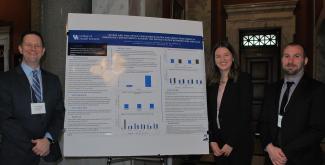
Presented research at the 2020 Posters-at-the-Capitol event in Frankfort, KY
"I have gained so much by being involved in research while being an undergraduate. Not only has working in a lab taught me so much, but it has also illuminated the specific career path I want to peruse. I came into college as a pre-medical student that had no clue what I wanted to specialize in after medical school. However, through getting involved in research in UKCOM’s OB/GYN department, I have become very passionate about research, and I am now confident that I want to specialize in obstetrics/gynecology as a physician while still being heavily involved in research (MD/Ph.D.). Working in a lab has taught me basic lab skills and numerous established procedures. Additionally, I have learned how to write abstracts and publication-level manuscripts, how to make scientific posters and present them, how to answer questions about my research to different audiences, and how to efficiently read, analyze, and critique other scientific papers. But most importantly, research has taught me how to be a scientist. This means how to think critically and problem solve when you don’t get results that you expected, and I firmly believe that this is something that cannot be taught in a classroom." - Katie Land, Biology major, UK Class of 2021
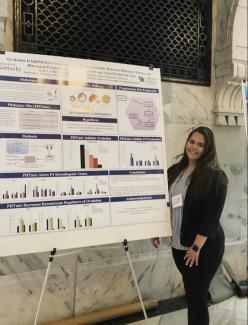
Presented research at The Annual Biomedical Research Conference for Minority Students (ABRCMS) 2019 Conference in Anaheim, CA.
"This opportunity was beneficial to me because I was able to gain experience presenting my research in a setting with experts from my discipline. I was also able to network with potential graduate programs and attend exciting research seminars. Research has contributed to my undergraduate experience by allowing me to think critically and ask questions in an environment outside of the classroom. Learning research skills has given me a more well-rounded education." - Maya Woolfolk, Biology major, UK Class of 2020
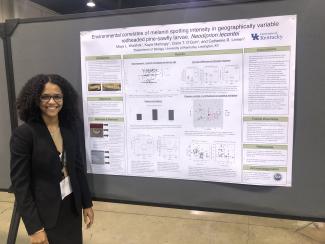
Presented research at The Annual Biomedical Research Conference for Minority Students (ABRCMS) 2019 Conference in Anaheim, CA.
"I had a great time presenting my research at the ABRCMS 2019 Conference in Anaheim, CA. This opportunity granted me the chance to travel to another part of the country and learn about new research students are working on. This was also a chance for me, an introvert at heart, to step out of my comfort zone and learn in a new environment." - Nicholas Graves
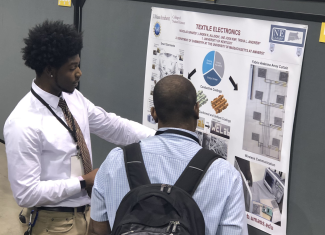
Presented research at the 2019 Southeastern Regional IDeA Conference.
"While attending the 2019 Southeastern Regional IDeA Conference, I was able to listen to great presentations about current research in a variety of different fields including biotechnology, cancer research, and clinical and translational science. Also, the conference allowed me to attend workshops to better develop my professional skills including a grant writing workshop. At the end of the conference, I presented my undergraduate research in a poster session. While presenting my poster, I received valuable feedback and insight on my project and also networked with other professionals in the scientific community." - Claire Crosby
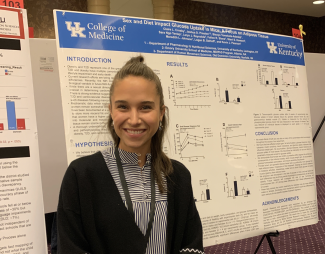
"My summer experience was phenomenal. Dr. Osborn was and continues to be everything I look for in a research mentor and provides advice, guidance, and knowledge at every opportunity. The skills and experience I gained this summer will be essential in helping me to matriculate to a fully-funded MD/PhD program after finishing my undergraduate degree and will allow me to fulfill my goal of becoming a leading physician-scientist who studies disease to improve patient outcomes and health."
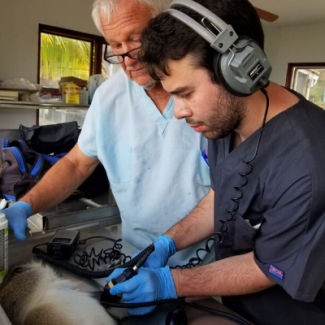
"The experience of doing independent research with a faculty mentor has greatly enriched my undergraduate experience. It has given me the confidence to pursue greater knowledge in areas of personal interest even if there is not a class that can help me to explore those ideas. Furthermore, researching various forms of play, particularly nature play and contemplative play have allowed me to learn a lot about the value of things that I am passionate about –namely the environment and the importance of reflection." - Emily Andreasson, Interior Design major, 2019 Summer Research Fellow

"This summer research experience has contributed greatly to my undergraduate education and life goals. My career goal is to become a professor/PI and do research to help improve the lives of people who suffer from mental health and/or neurological diseases. Learning about epigenetic mechanisms in drug dependency opened my eyes to a whole new field of knowledge with many practical applications. In addition, working at PUCRS has also taught me to navigate the dynamics of lab team and how important it is for all the members to maintain clear lines of communication. While at PUCRS I also learned protocols for important biochemical assays such as RNA extraction, cDNA conversion, and PCR. Lastly, the main thing that I have taken from working at this summer project is that scientific research is the field of work I want to pursue; this summer project has motivated me even more to pursue my aspirations." - Bernardo Aguzzoli Heberle - 2018 Summer Research Fellow
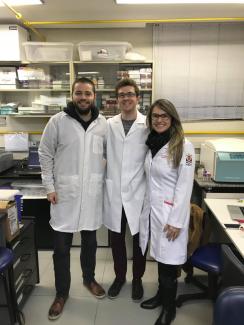
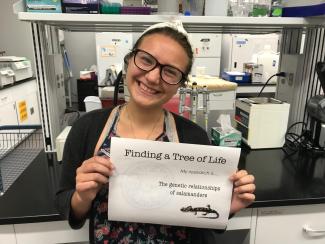
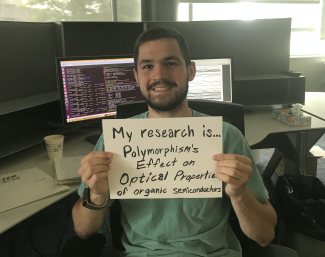
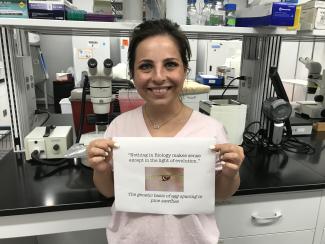
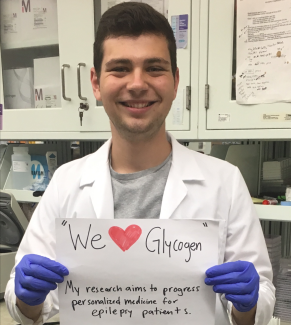

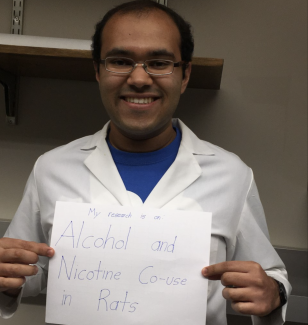


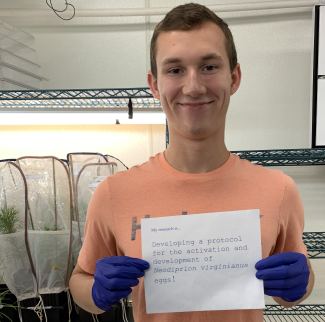
| ugresearch@uky.edu | |
| Phone | 859-257-0049 |
| Fax | 859-257-8734 |